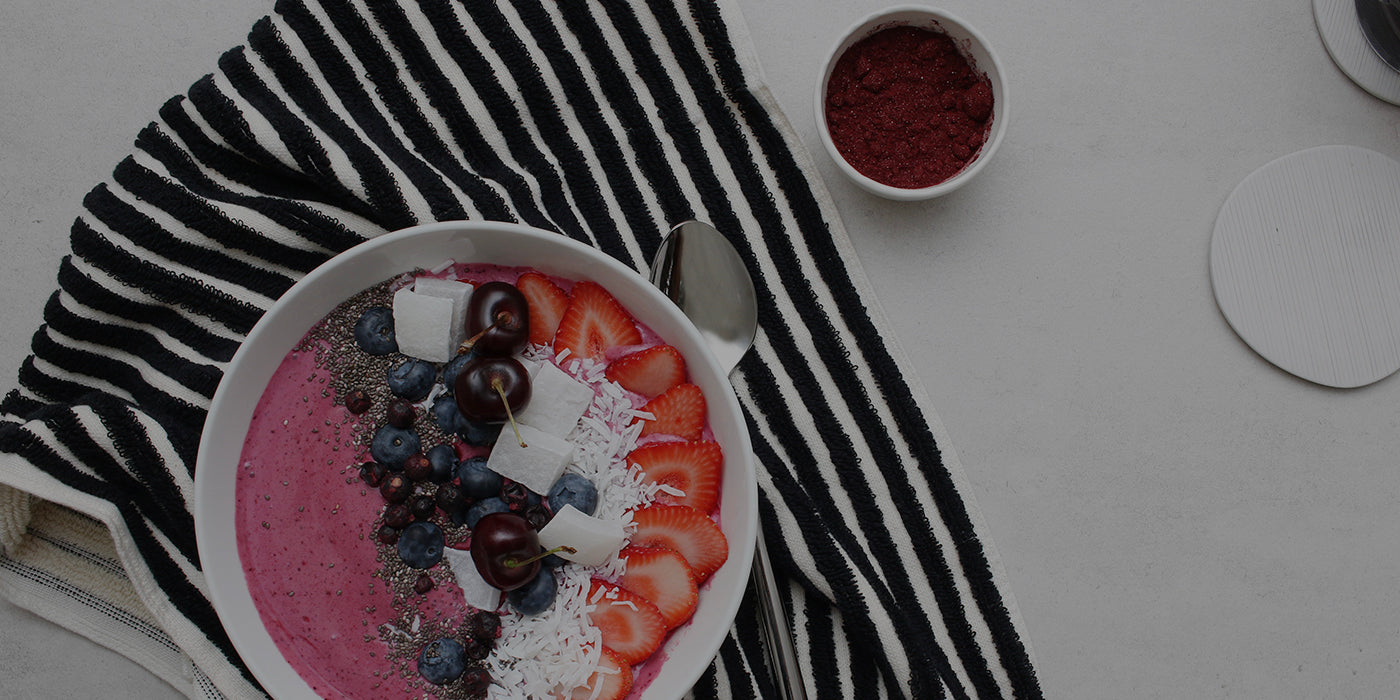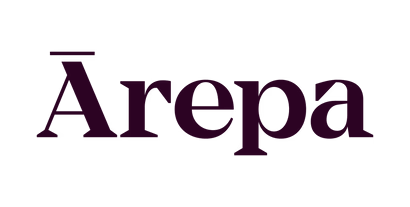Your Cart is Empty
Free Shipping on orders over $100 🚚
Free Shipping on orders over $100 🚚
Where is your Brain?
Your brain is amazing. Select your country's website to access the world's best scientifically proven Brainfood.
What are Anthocyanins? 6 Health Benefits of this Potent Colour Compound
July 22, 2020 7 min read

Anthocyanins are just one of the more than 6,000 different types of flavonoid polyphenol phytonutrients (1). Other types that have similar properties to anthocyanin include flavanols, flavones, flavanones, flavan-3-ols and isoflavones.
Ārepa is rich in flavonoids thanks to our special Neuroberry Blackcurrants, found in all our brainfood products. These are packed with vitamin C to support focus and neurological function as part of a healthy and varied diet.
The reason we hear more about anthocyanins compared to other related antioxidants is that they are widely available in many fruits and veggies. Experts believe that most people who eat a varied, healthy diet probably consume nine times the amount of anthocyanins compared to other dietary flavonoids. Most nutrient-dense plant foods provide many types of flavonoids, although they tend to be highest in just one or two.
Since anthocyanins cause foods to be red, purple and blue, do grapes contain them? How about eggplant and blueberries? The answer is yes, all of these foods plus many more provide us with anthocyanins, plus a number of other important nutrients too. What are the benefits of eating nutrient-dense foods that provide anthocyanin? Some of the most important include protecting yourself against developing cardiovascular disease, cancer and neurological disorders.
What Are Anthocyanins?
Anthocyanins are a type of flavonoid, a family of powerful antioxidants that fight the effects of aging and oxidative stress. To date, more than 635 different anthocyanins have been identified. (2)
What is the colour of anthocyanins, and what does this tell us about where we can find them? The definition of anthocyanins is “blue, violet, or red flavonoid pigments found in plants.” In regard to anthocyanin’s structure, anthocyanins are water-soluble, glycoside pigments that can vary in colour depending on their specific pH. The exact type of anthocyanin that a fruit or veggie contains is partially what determines how deeply red, purple, violet, blue or even orange it will be. This is one reason why the same food, such as eggplants or onions, can come in many different shades.
Here’s the cool thing about most antioxidants: Not only do they benefit you when you eat them, but they also benefit the plants that contain them too. Plants produce phytochemicals like anthocyanin as a protective mechanism; phytochemicals help build plants’ resistance and protect them from being destroyed. For example, anthocyanin can offer plant protection from being eaten by predators (like bugs, birds or rodents) and from environmental stressors like ultraviolet light, cold temperatures and drought.
6 Anthocyanin Benefits
What do anthocyanins do inside the body once we consume them?
We still have a lot to learn to about the exact bioactivity, uptake, absorption and roles of phytonutrients, including anthocyanin. We do know that anthocyanins seem to play a role in fighting free radical damage, which leads to aging and the formation of numerous diseases. (3) Beyond their capacity to fight free radicals/oxidative stress, anthocyanins have many other effects when it comes to protecting cells, tissues and vital organs that we’re still uncovering. For example, research suggests that anthocyanins have positive effects on gut health when they interact with microflora, which can help decrease inflammatory markers associated with many chronic diseases, plus they can support hormonal balance.
What are the health benefits of anthocyanins? Some of the conditions that research suggests anthocyanins may help prevent include:
- Cardiovascular disease and risk factors, such as high blood pressure and hardening of the arteries
- Cancer
- Impaired immune function
- Diabetes
- Neurological disorders, such as Alzheimer’s disease and dementia
- Symptoms of poor cognitive function, including poor memory and trouble concentrating
- Fatigue
- Poor recovery from exercise/physical activity
- Vision loss
- Obesity
Cardiovascular and Heart Health
Overall, many studies have found that having just one to two(or ideally more) servings of anthocyanin-rich foods per day can protect you from problems from high blood pressure and arteriosclerosis. While it’s great to have antioxidant-rich foods every day, even having them several times per week can improve your health. One finding from the Iowa Women’s Health Study, which included more than 34,000 postmenopausal women, found that women who consumed anthocyanin-rich strawberries and blueberries once per week or more experienced significant reductions in risk of death from heart disease/coronary artery disease. (4)
Another large body of research from the Nurses’ Health Study I and II, which followed over 46,000 women from and 23,000 men for more than a decade, found evidence that the those with the highest intakes of anthocyanin (especially from blueberries and strawberries) had a significantly decreased risk for developing hypertension, myocardial infarction and/or having a heart attack compared to those with the lowest intake. (5) This was true even after controlling for other factors like exercise level, family history and BMI.
Anthocyanin benefits for diabetes and pancreatic disorders have also been unearthed in recent years, and again the efficacy is attributed to the multiple, simultaneous biological effects these pigments cause in the body, including prevention of generation of free radicals, decreased lipid peroxidation, reduced pancreatic swelling, and decreased blood sugar concentrations in urine and blood serum. (6)
Immune Function
Anthocyanin bioflavonoids may provide protection from DNA damage and lipid peroxidation, plus they have anti-inflammatory effects and help boost production of cytokines that regulate the immune responses. They have also been shown to support hormonal balance by reducing estrogenic activity, help regulate enzyme production that aids nutrient absorption, and strengthen cell membranes by making them less permeable and fragile. (7)
Fight Against Cancer
Research suggests that anthocyanin can decrease the risk of developing various types of cancer due to its antioxidant, anticarcinogenic and anti-inflammatory effects. This has been demonstrated in both in vitro and in vivo research trials in humans and animals. Studies show that anthocyanins have the ability to naturally fight cancer by blocking cell proliferation and inhibiting tumor formation by interfering with the process of carcinogenesis. One way anthocyanins inhibit tumorigenesis by blocking activation of mitogen-activated protein kinase pathways. (8)
Cognitive Function
Studies have found that diets high in antioxidants like anthocyanin lead to a reversal in certain age-related deficits that affect neural and behavioural parameters, including memory and motor functions. Anthocyanins have been credited with protecting memory, coordination and neural function in older populations. One study out of Korea found that administration of isolated anthocyanins from purple sweet potato enhanced cognitive performance and inhibited lipid peroxidation in brain tissues in mice. (9)
Exercise Performance and Recovery
Read the latest research on New Zealand Blackcurrant enhancing performance and recovery here.
Antioxidants seem to improve physical performance by lowering exhaustion and the negative effects of excessive oxygen and radical accumulation during physical activities. In one double-blinded clinical trial that involved 54 female and male athletes, when one group was given 100 milligrams of anthocyanin pills per day for six weeks, the participants in that group were found to experience a significant improvement in their VO2 max (maximal oxygen consumption) compared to the second group that received 100 milligrams of placebo pills daily. (10)
Vision and Eye Health
Anthocyanin has been shown to help enhance night vision and overall vision by protecting the eyes from free radical damage. One study found that oral intake of anthocyanosides from black currants resulted in significantly improved night vision in adults. Research suggests that enhancement of rhodopsin regeneration and protection against inflammation are at least two mechanisms by which anthocyanins improve sight and protect the eyes. (13)
Anthocyanin Foods
Flavonoid phytochemicals are predominantly found in foods/beverages, including teas, honey, wines, fruits, vegetables, nuts, olive oil and cocoa.
Which foods are high in anthocyanins? The best way to obtain anthocyanin is to eat foods that are red, blue, purple, violet and orange (or some combination of these colours). When an anthocyanidin molecule is paired with a sugar this is called a glycoside, which is how colours/pigments are expressed in plant foods.
What veggies and fruits contain anthocyanins? The top anthocyanin foods include:
- Berries, especially blackcurrants, elderberries, cranberries, tart cherry juice, blueberries, black raspberries, blackberries and strawberries. The freshly squeezed juices of these fruits are also a source. Certain “superfood” berries also contain anthocyanin, including elderberry, hawthorn berry, loganberry and açai berry.
- Red and purple grapes, especially Concord grapes.
- Cherries
- Pomegranate (including the juice)
- Red wine
- Eggplants (especially the purple type, as opposed to white)
- Black plums
- Blood oranges
- Red cabbage
- Red onion
- Purple sweet potatoes
- Blue corn
- Purple and black carrots
- Edible flowers and herbs, including purple mint, purple passion flower, purple sage, common violet and lavender
- Certain types of apples, such as red delicious
The exact amount of anthocyanin found in these foods can vary greatly depending on variables like where and how the food is grown, whether it’s organic or not, and how fresh it is when eaten.
Anthocyanins in Ayurveda and Traditional Chinese Medicine
Long before scientific studies were conducted to isolate and investigate anthocynanin, foods containing this antioxidant were used in folk medicines around the world to improve health and fight disease. Traditional cultures have known about the healing effects of anthocyanin foods for centuries. For example, historically, red, blue, black and purple foods have been viewed as remedies for conditions like liver disfunction, hypertension, vision disorders, microbial infections, fatigue, anxiety and diarrhea.
In Traditional Chinese Medicine (TCM), dark-colored plant foods that are blue or purple are said to help “break through patterns of stagnation.” In TCM a food’s color tells a lot about its health effects. Black foods are said to be warming and best for winter, while red foods are cooling and best for summer. (17) Dark-colored foods also correspond with the element water and are linked to coolness and saltiness. They are said to support organs including the stomach, spleen and kidneys by improving the ability to store energy, balancing fluid metabolism and dispelling toxins.
Red foods, on the other hand, are associated with warmth, fire, summer, happiness and bitterness in TCM. Red foods are believed to support organs including the heart and small intestine. They help nourish blood, improve circulation, and reduce symptoms in people with anemia, palpitations, cold limbs, pale face and lack of strength or energy.
In Ayurvedic medicine, red, purple and blue foods can be viewed as either warming or cooling. Grapes, cherries and oranges build heat, while berries, pomegranate, cabbage and eggplant reduce warmth. (18) All types of berries are especially valued in Ayurveda, since they are viewed as being capable of reducing internal heat, soothing swelling, treating inflamed tissues and helping cool the blood. In Ayurveda, foods also correspond with certain emotions. (19) Red foods lift energy and fight lethargy and fatigue, while blue and black foods are calming and fight anxiety.
Leave a comment
Comments will be approved before showing up.

















